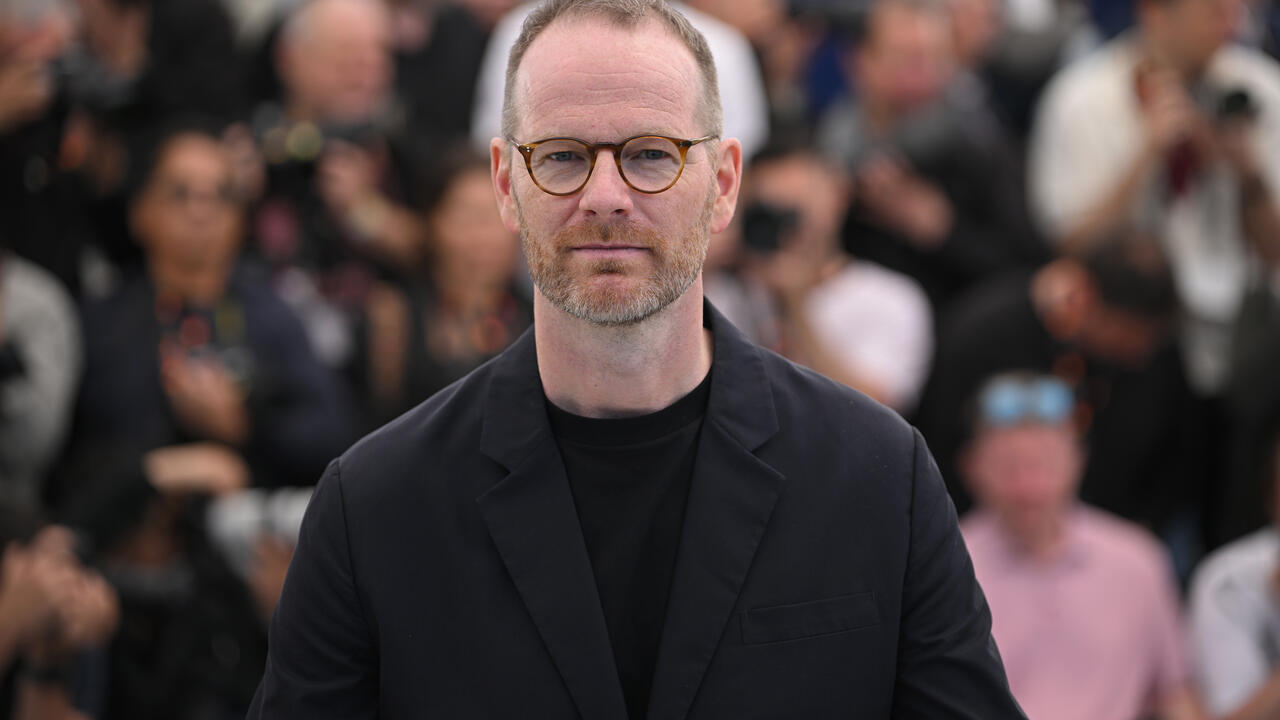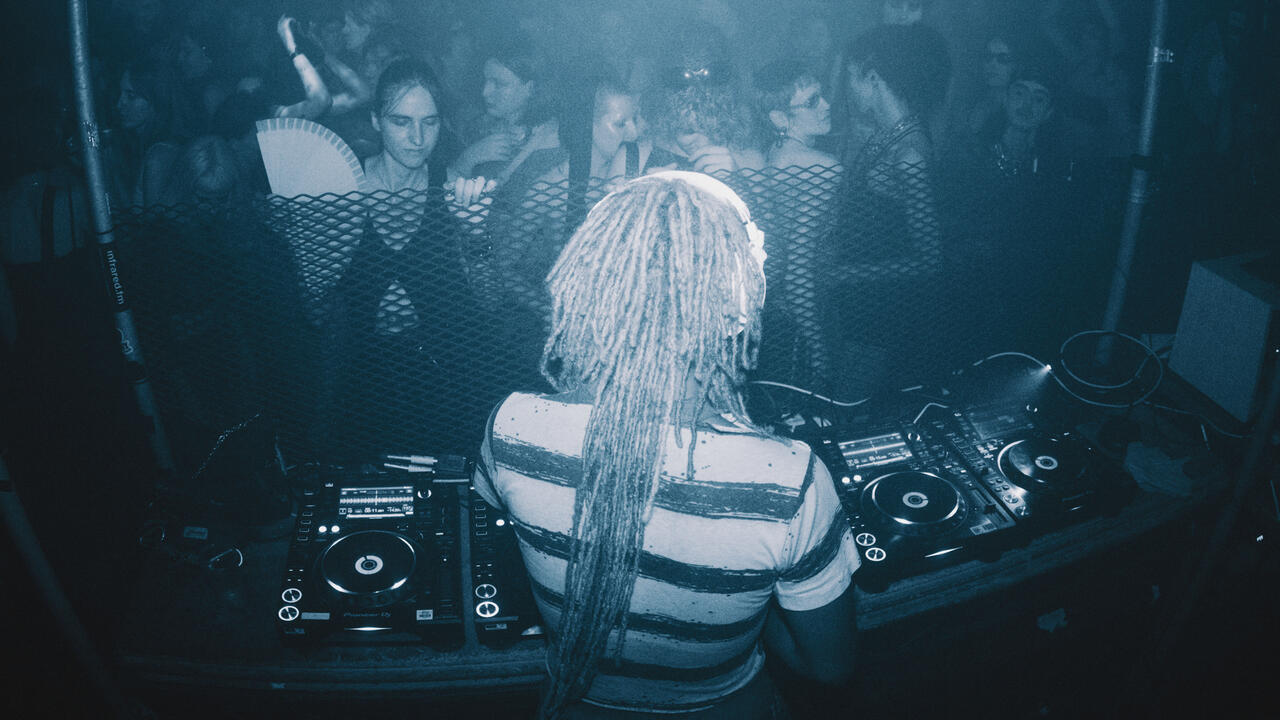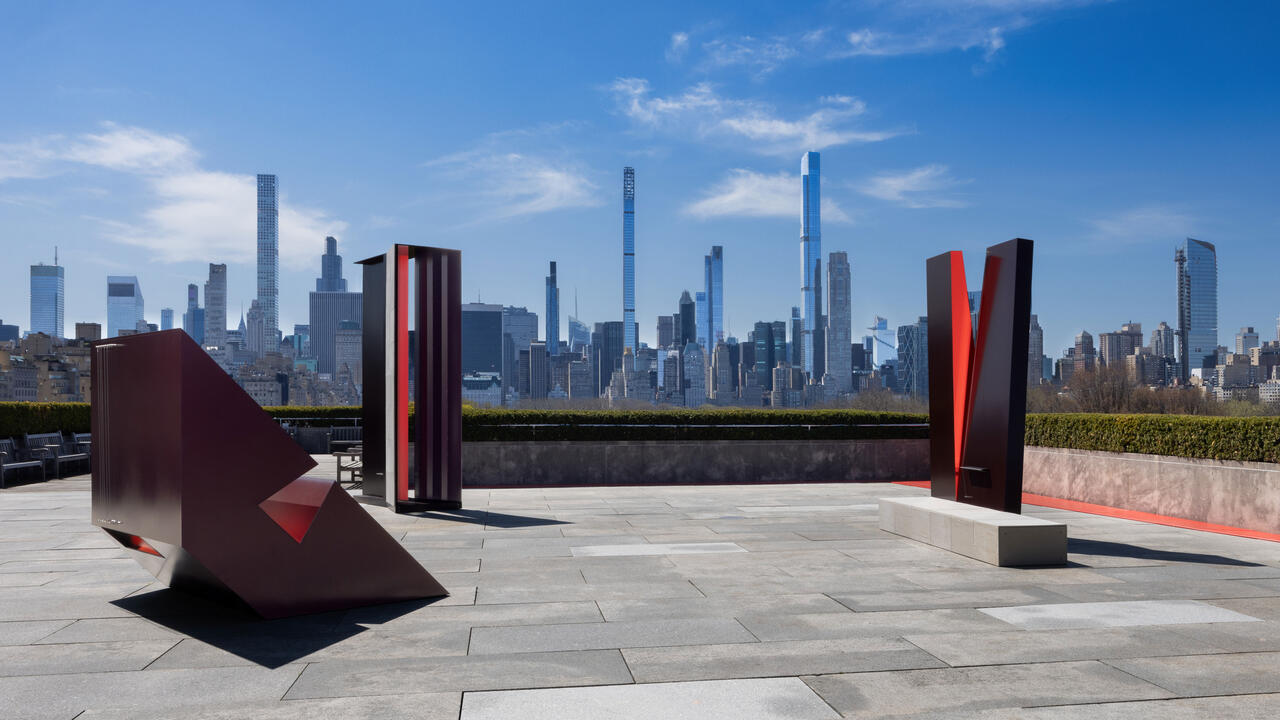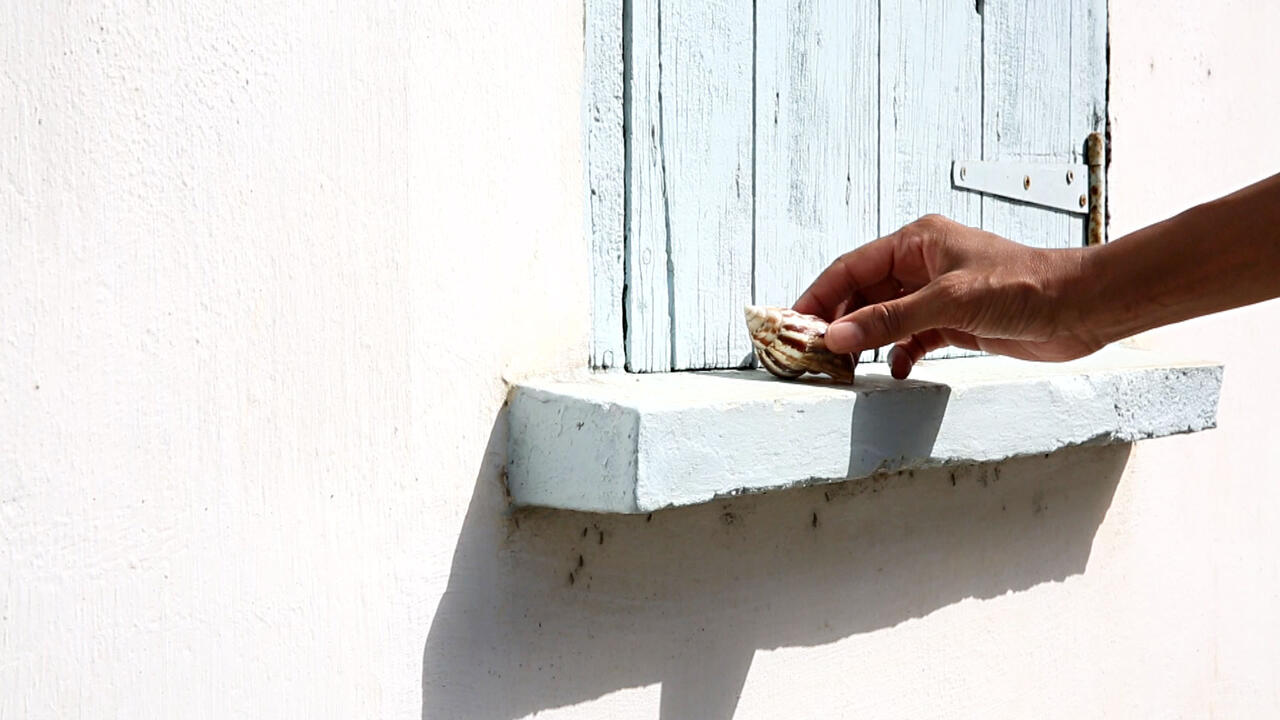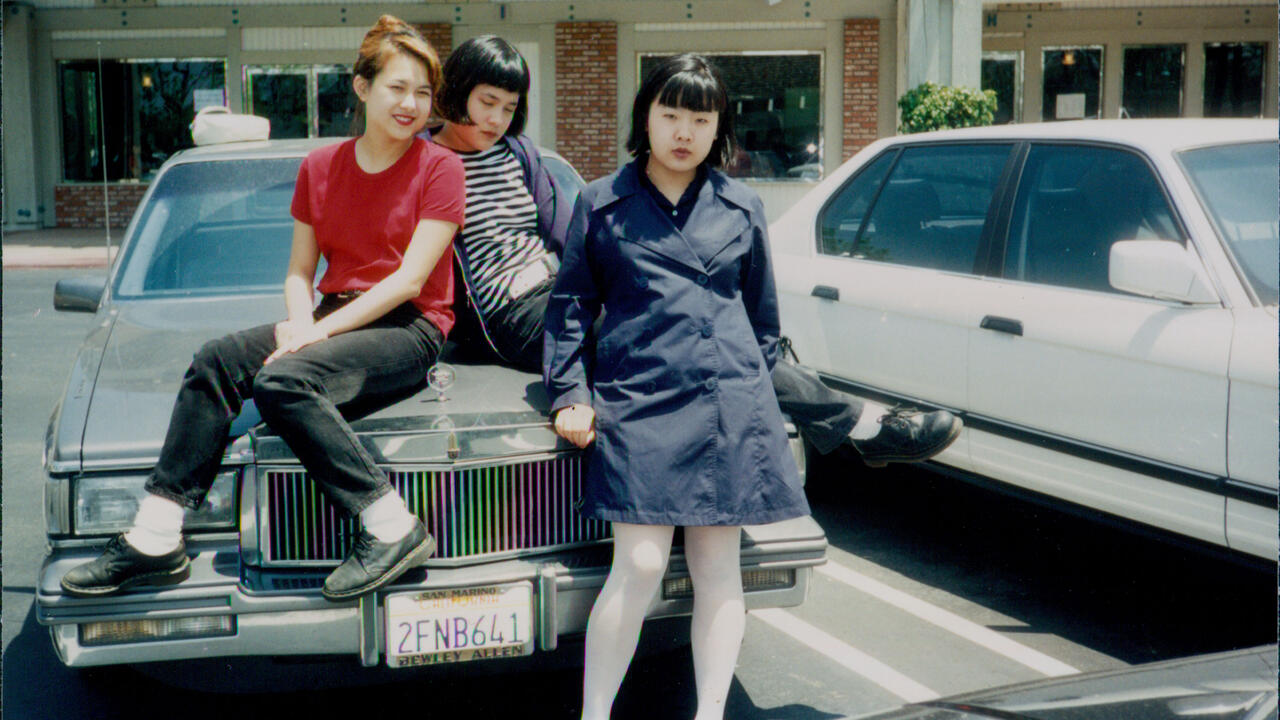Ladies and Gentlemen, Miss Grace Jones
Sophie Fiennes’s new film Bloodlight and Bami reveals a personal side of the singer as yet unseen
Sophie Fiennes’s new film Bloodlight and Bami reveals a personal side of the singer as yet unseen

‘Ladies and gentlemen, Miss Grace Jones.’ The opening credits of Sophie Fiennes’s new film Bloodlight and Bami (2018) give way to the Jamaican-American singer Grace Jones, regal yet concealed behind an ornate gold skeleton mask attached to a spiked hat, with sharp feathers bursting from the top. She sings her 1985 hit ‘Slave to the Rhythm’, holding the microphone below her mask and moving with the elegant, sharp gestures of a fashion model. (Jones began her career as a model with the Wilhelmina Agency in the late 1960s.) She wears a black corseted leotard with a billowing blue coat and bare legs – until the scene cuts, and then she’s wearing only the leotard, now paired with a lacy gold cat-ear mask, while she hula-hoops on stage. She is, in short, iconic.

This opening scene presents Jones as she is best known: onstage, alluring and confident, with extravagant style. It depicts a performance from her 2009 tour, at which time Jones was already in her early 60s, yet she appears just as fierce as she did at the height of her celebrity in ’80s, when she was not only a mainstay on the dance charts, but an actor in such movies as Conan the Destroyer (1984) and A View to a Kill (1985). Recent concert footage – with Jones dancing in elaborate costumes, backlit by columns of colored light – is intercut throughout the film with scenes of her life offstage, documented by Fiennes over the course of several years as she worked on her 2008 record Hurricane, in studios, hotel suites and throughout Jamaica, Jones’s birthplace.
The sound from one scene sometimes overlaps with another, so that audio of Jones introducing Hurricane’s ‘Williams Blood’ at a concert, for instance, plays over a still shot of lush Jamaican hills in early morning fog; the song – an ode to her heritage – itself begins during the following scene, over a dinner-table conversation about family history among Jones and her relatives, before it cuts to her back on stage. Melding the artist’s personal experiences with her career and drawing out the ways in which the former has influenced the latter suggests that these facets of Jones’s life are inextricable from one another. Indeed, the film’s title refers to the fusion of the two: ‘bloodlight’ is Jamaican patois for the red on-air light of a recording studio and ‘bami’ means bread, or everyday nourishment.

‘That was unbelievable, Grace. I’ve waited twenty-five years to see you,’ an adoring fan gushes from behind the barricade separating Jones from her admirers after the concert. It’s not an uncommon refrain; Jones is notorious for her lateness, once showing up several hours late to a stadium concert – not out of malice or self-importance, but perhaps because she seems to travel in another dimension than the rest of us. The crowd of fans wave records and magazines for her to sign; she is characteristically gracious but firm (‘One each … my mother’s waiting for me.’). There’s an expectation that a star like Jones – known for being an ‘angry diva’ (how infrequently that description is acknowledged as gendered and racialized) – would be aloof even in daily life, but the film makes clear that this is not the case. Rather, she is presented as fully human, a deeply talented woman with a commanding presence and a complicated personal history. In a particularly transfixing scene, Jones – whose distinctive disco-meets-glam style has influenced performers like Lady Gaga and Beyoncé – puts on makeup, daubing and blending theatrical red and gold paints, before a concert in New York. She appears at once humble (a celebrity like Grace Jones, doing her own makeup!) and impressive (who else but Grace Jones could do makeup so well?). And the image she constructs is at once futuristic, forceful, sexy, and strange, a complex vision at odds with normative ideas about femininity.

Other footage is more banal: Jones and a companion drive along a bumpy road in Jamaica (the footage is slightly dizzying), drinking from fresh coconuts. Jones, wearing a sweatshirt as headpiece and emphasizing the Jamaican part of her otherwise Euro-Jamaican-American accent, dresses down Robbie Shakespeare, her longtime bassist, over the phone. Her intonation shifts depending on the circumstances: whether that lilting patois in the studio in Jamaica or sliding effortlessly into French in the back of a Parisian taxi, her speech – like Jones herself – is always distinctive yet unplaceable, impossible to pin down. Throughout, the camera is less a fly on the wall than an unobtrusive acquaintance. Fiennes, whose previous films include The Pervert’s Guide to Cinema (2006) and The Pervert’s Guide to Ideology (2012) – collaborations with the philosopher Slavoj Žižek – is skilled at framing captivating personalities and following the nonlinear trajectory of an individual life or line of thinking, rather than a straightforward filmic plot. An early film of hers followed Bishop Noel Jones, Jones’s brother, and his congregation in Los Angeles’s Watts neighborhood; she and Grace Jones were introduced through that project, eventually collaborating to make Bloodlight and Bami.

For viewers hoping for a documentary-style overview of Jones’s life and work, this may not be the ideal film: there are no talking heads, no archival footage, no methodical examination of Jones’s past. Instead, the film traces intersecting threads of Jones’s life as it is now, languidly moving through moments of stardom, professional demands, and her homecoming to family in Jamaica. As a portrait, it’s non-narrative and atmospheric – even the image quality is slightly grainy or hazy – and, as a result, the film feels somewhat inconclusive. Yet the proximity it offers to Jones – the glitter and drama and familiarity of her life, on- and offstage – poignantly reveals the artist as more utterly mesmerizing than even a fan might expect.
Main image: Sophie Fiennes, Bloodlight and Bami, 2018, film still. Courtesy: Trafalgar Releasing









